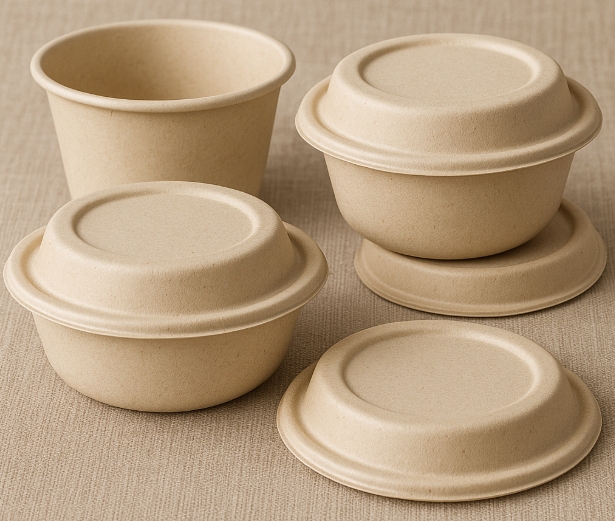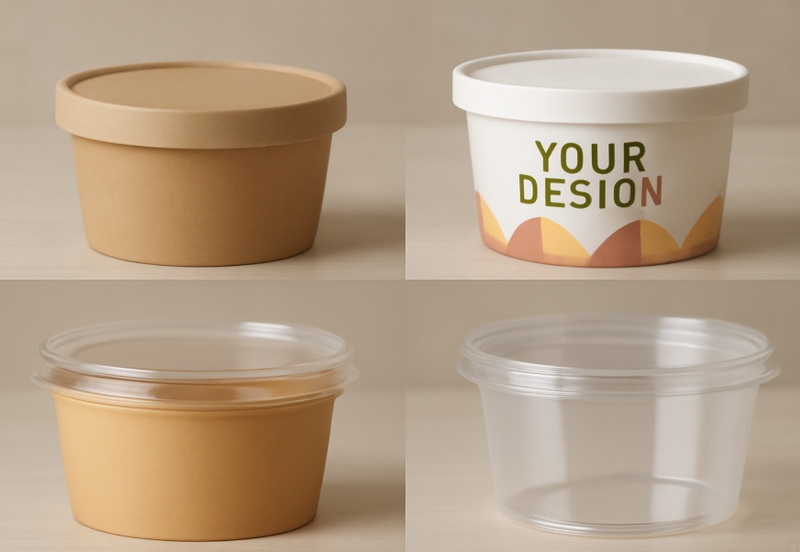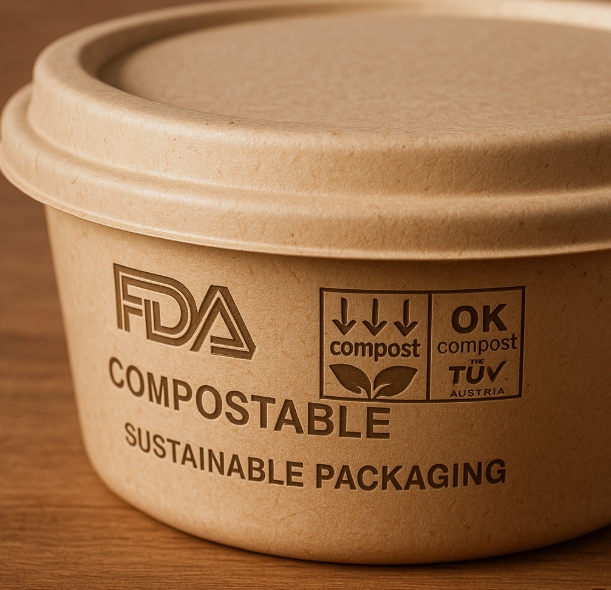
Content Menu
● Understanding the Bowl and Lid Set Market
>> The Global Landscape
>> Key Market Drivers
● Product Specifications and Quality Standards
>> Material Selection
>> Design and Functionality
>> Quality Assurance
● Regulatory Compliance and Certifications
>> Food Safety Standards
>> Environmental Regulations
>> Labeling and Documentation
● Supplier Selection and Relationship Management
>> Sourcing Strategies
>> Negotiating Terms
>> Building Long-Term Partnerships
● Logistics and Shipping Considerations
>> Packaging for Export
>> Shipping Methods
>> Customs and Import Duties
● Risk Management in International Trade
>> Common Risks
>> Mitigation Strategies
● Trends and Innovations in Bowl and Lid Sets
>> Eco-Friendly Solutions
>> Smart Packaging
>> Customization and Personalization
● Case Studies: Success Stories in Exporting Bowl and Lid Sets
>> Expanding into New Markets
>> Overcoming Regulatory Challenges
● Best Practices for International Buyers
● Conclusion
● Frequently Asked Questions (FAQ)
>> 1. What materials are commonly used for bowl and lid sets in international trade?
>> 2. How can I ensure the quality of bowl and lid sets from overseas suppliers?
>> 3. What certifications are necessary for exporting bowl and lid sets?
>> 4. How do I handle customs and import duties when exporting bowl and lid sets?
>> 5. What are the current trends in the bowl and lid set market?
The global market for bowl and lid sets is rapidly evolving, driven by changing consumer preferences, advances in manufacturing, and heightened awareness of food safety and environmental issues. For international buyers, exporting these products offers both lucrative opportunities and complex challenges. Understanding the nuances of product specifications, regulatory compliance, supplier relationships, and logistics is essential for success in the global trade of bowl and lid sets. This article provides a comprehensive guide for international buyers, outlining everything they need to know to navigate this dynamic sector with confidence.

Understanding the Bowl and Lid Set Market
The Global Landscape
Bowl and lid sets are indispensable in various industries, including hospitality, catering, food delivery, and household use. The wide array of materials and designs reflects the diverse needs of consumers and businesses worldwide. From lightweight plastics to elegant glass and robust stainless steel, each material brings its own advantages and considerations. Additionally, the rise of sustainable and biodegradable options is reshaping the market, as more buyers seek environmentally friendly alternatives.
Key Market Drivers
Several factors are fueling the growth and transformation of the bowl and lid set market:
- Sustainability: Growing environmental consciousness is pushing manufacturers and buyers to adopt eco-friendly materials and production methods.
- Food Safety: Stringent regulations and consumer demand for safe, non-toxic products are driving improvements in quality and compliance.
- Customization: Businesses are increasingly seeking unique designs, colors, and branding options to differentiate their offerings.
- Convenience: The demand for products that are easy to use, store, and transport is influencing product innovation and design.
Product Specifications and Quality Standards
Material Selection
Selecting the right material for bowl and lid sets is critical, as it affects not only the product's functionality but also its compliance with regulations and market appeal.
- Plastic: Popular for its affordability and versatility, plastic must be food-grade and free from harmful chemicals. Innovations in biodegradable plastics are gaining traction.
- Glass: Favored for its durability, reusability, and premium feel, glass sets are ideal for markets that value longevity and aesthetics.
- Stainless Steel: Known for its strength and resistance to corrosion, stainless steel is suitable for repeated use and is often chosen for institutional or commercial purposes.
- Biodegradable Materials: Made from plant-based sources like bamboo or cornstarch, these sets are increasingly popular among eco-conscious consumers and regions with strict environmental regulations.
Design and Functionality
The design of bowl and lid sets greatly influences their usability and marketability. Buyers should consider:
- Stackability: Efficient stacking saves space during storage and transportation.
- Leak-Proof Features: Secure lids are essential for transporting liquids and preventing spills.
- Microwave and Dishwasher Compatibility: Products that can withstand heat and repeated washing are highly valued by consumers.
- Size and Capacity: Offering a range of sizes allows for versatility and meets diverse customer needs.
Quality Assurance
Maintaining high quality is non-negotiable in international trade. Buyers should implement robust quality control processes, including:
- Supplier Audits: Visiting manufacturing sites to verify capabilities and standards.
- Product Testing: Ensuring products meet safety and performance requirements.
- Batch Sampling: Regularly testing samples from production batches to ensure consistency.
Regulatory Compliance and Certifications
Food Safety Standards
Compliance with food safety regulations is essential for international buyers. Key considerations include:
- International Standards: Products must be manufactured using materials that are safe for food contact and free from toxic substances.
- Country-Specific Requirements: Each market may have its own regulations regarding food packaging, so it is crucial to stay informed about local laws.
- Documentation: Certificates of compliance, test reports, and safety data sheets should be readily available and up to date.
Environmental Regulations
With the global push towards sustainability, environmental regulations are becoming more stringent. Buyers should be aware of:
- Material Restrictions: Some countries have banned or restricted certain types of plastics or non-recyclable materials.
- Recyclability and Compostability: Products may need to meet specific criteria to be marketed as recyclable or compostable.
- Labeling Requirements: Accurate labeling regarding material composition and disposal instructions is often mandated.
Labeling and Documentation
Proper labeling is not only a regulatory requirement but also a tool for building consumer trust. Labels should clearly indicate:
- The material used
- Country of origin
- Safety and usage instructions
- Recycling or composting information

Supplier Selection and Relationship Management
Sourcing Strategies
Identifying reliable suppliers is a foundational step for successful exporting. Effective sourcing strategies include:
- Attending Trade Shows: Industry events provide opportunities to meet suppliers, inspect products, and negotiate terms face-to-face.
- Leveraging Online Platforms: Digital marketplaces offer access to a wide range of suppliers, but due diligence is essential to verify credibility.
- Seeking Referrals: Recommendations from industry contacts can help identify trustworthy manufacturers.
Negotiating Terms
Negotiation is a critical skill in international trade. Key points to address include:
- Pricing: Striking a balance between cost and quality is vital.
- Minimum Order Quantities: Ensure that order sizes align with your business needs and storage capabilities.
- Payment Terms: Agree on payment schedules that protect both parties and facilitate smooth transactions.
- Lead Times: Establish clear timelines for production and delivery to avoid delays.
Building Long-Term Partnerships
Strong supplier relationships lead to better communication, improved product quality, and priority service. Building trust through regular communication, transparent feedback, and mutually beneficial agreements is essential for long-term success.
Logistics and Shipping Considerations
Packaging for Export
Proper packaging safeguards products during transit and ensures they reach their destination in optimal condition. Considerations include:
- Protective Materials: Use cushioning and sturdy boxes to prevent damage.
- Efficient Packing: Optimize packaging to reduce shipping costs and environmental impact.
- Compliance: Ensure packaging materials comply with import regulations in the destination country.
Shipping Methods
Choosing the right shipping method depends on factors such as volume, budget, and delivery timelines:
- Air Freight: Suitable for urgent or high-value shipments, though more costly.
- Sea Freight: Ideal for large volumes, offering cost savings but longer transit times.
- Courier Services: Best for small, time-sensitive orders.
Customs and Import Duties
Navigating customs procedures is crucial for timely delivery. Key steps include:
- Tariff Classification: Correctly classify products to determine applicable duties and taxes.
- Documentation: Prepare accurate invoices, packing lists, and certificates of origin.
- Customs Brokers: Engage experienced brokers to facilitate clearance and resolve any issues.
Risk Management in International Trade
Common Risks
International buyers face several risks, including:
- Quality Variations: Inconsistent product quality can harm reputation and sales.
- Delivery Delays: Shipping disruptions can impact inventory and customer satisfaction.
- Regulatory Changes: Sudden changes in laws can affect the ability to import or sell products.
Mitigation Strategies
To minimize risks, buyers should:
- Diversify Suppliers: Avoid dependency on a single source.
- Purchase Insurance: Protect shipments against loss or damage.
- Stay Informed: Monitor regulatory developments in both exporting and importing countries.
Trends and Innovations in Bowl and Lid Sets
Eco-Friendly Solutions
The shift towards sustainability is transforming the bowl and lid set market. Innovations include:
- Biodegradable and Compostable Products: Made from renewable resources, these sets appeal to environmentally conscious consumers.
- Reusable Designs: Durable materials and designs encourage repeated use, reducing waste.
Smart Packaging
Technological advancements are enhancing product features:
- Traceability: QR codes and digital tracking provide supply chain transparency.
- Tamper-Evident Features: Enhanced safety and consumer confidence through secure closures.
Customization and Personalization
Modern manufacturing allows for greater customization:
- Branding: Custom colors, logos, and designs help businesses stand out.
- Special Editions: Limited runs for promotions or events can boost sales and brand loyalty.
Case Studies: Success Stories in Exporting Bowl and Lid Sets
Expanding into New Markets
A manufacturer targeting the European market adapted its product line to meet local preferences for sustainable materials and secured necessary certifications. By partnering with local distributors, the company successfully expanded its market presence.
Overcoming Regulatory Challenges
An exporter faced new environmental regulations in a key market. By switching to biodegradable materials and updating product labeling, the company maintained compliance and strengthened its reputation for sustainability.
Best Practices for International Buyers
- Conduct Market Research: Understand local preferences, regulations, and competition.
- Vet Suppliers Thoroughly: Assess manufacturing capabilities, quality control, and compliance.
- Negotiate Clear Contracts: Define expectations, responsibilities, and timelines.
- Plan Logistics Carefully: Choose the most suitable shipping methods and prepare for customs requirements.
- Monitor Industry Trends: Stay updated on innovations and regulatory changes.
Conclusion
Exporting bowl and lid sets presents significant opportunities for international buyers, but it also requires careful planning, thorough research, and strong supplier relationships. By understanding market trends, prioritizing quality and compliance, and mastering logistics, buyers can navigate the complexities of global trade and achieve sustainable growth in this dynamic industry. Adopting best practices and staying informed about regulatory and market developments will ensure long-term success in exporting bowl and lid sets.

Frequently Asked Questions (FAQ)
1. What materials are commonly used for bowl and lid sets in international trade?
Bowl and lid sets are typically made from plastic, glass, stainless steel, and biodegradable materials. The choice depends on factors such as cost, durability, market preferences, and compliance with local regulations.
2. How can I ensure the quality of bowl and lid sets from overseas suppliers?
To ensure quality, implement strict quality control measures such as supplier audits, product testing, and batch sampling. Regular communication with suppliers and clear quality requirements in contracts also help maintain standards.
3. What certifications are necessary for exporting bowl and lid sets?
Key certifications include food safety approvals, international standards such as ISO, and any local certifications required by the importing country. Always verify the specific requirements for your target market.
4. How do I handle customs and import duties when exporting bowl and lid sets?
Properly classify products using the correct tariff codes, prepare accurate documentation, and work with experienced customs brokers to facilitate smooth clearance and avoid unnecessary delays.
5. What are the current trends in the bowl and lid set market?
Major trends include the adoption of eco-friendly and biodegradable materials, increased customization and branding options, and the integration of smart packaging technologies for enhanced safety and traceability.

















